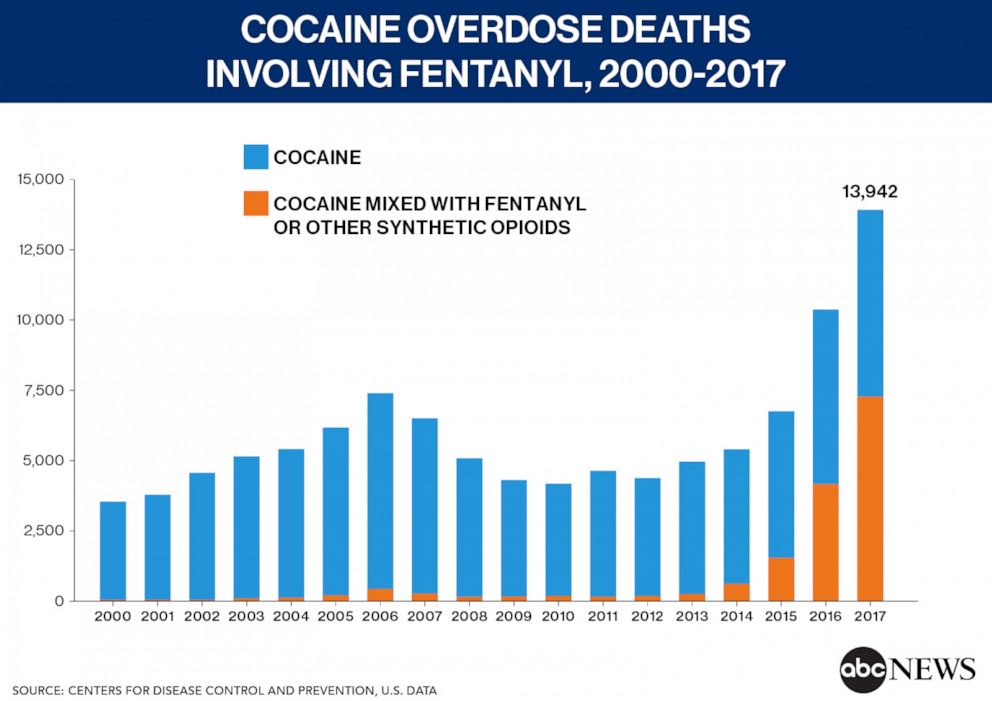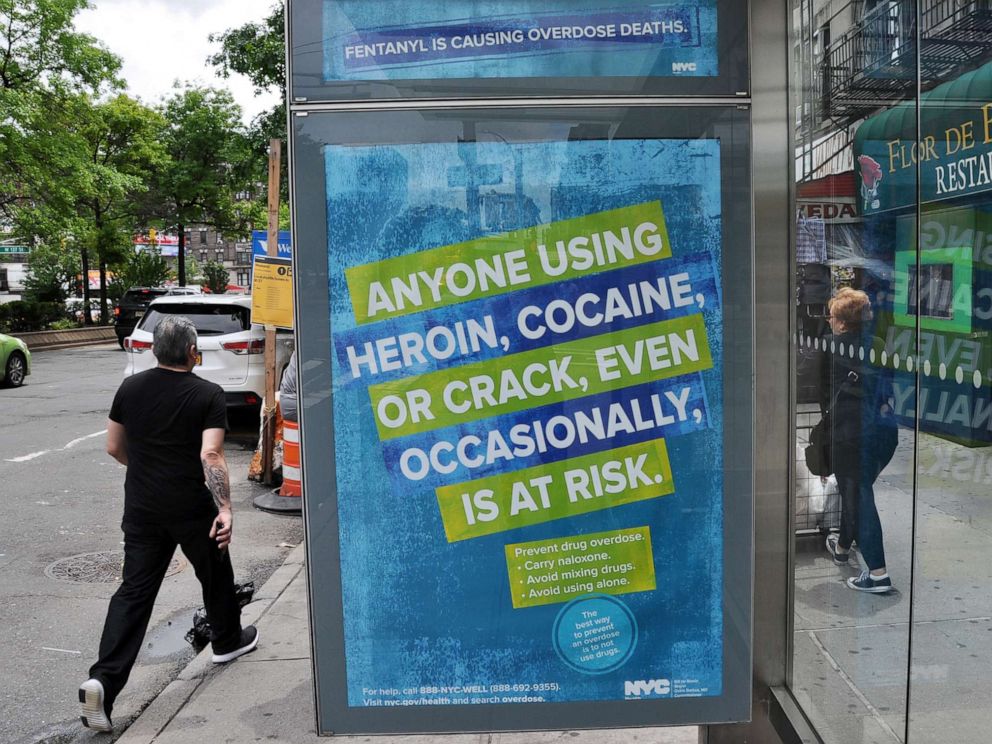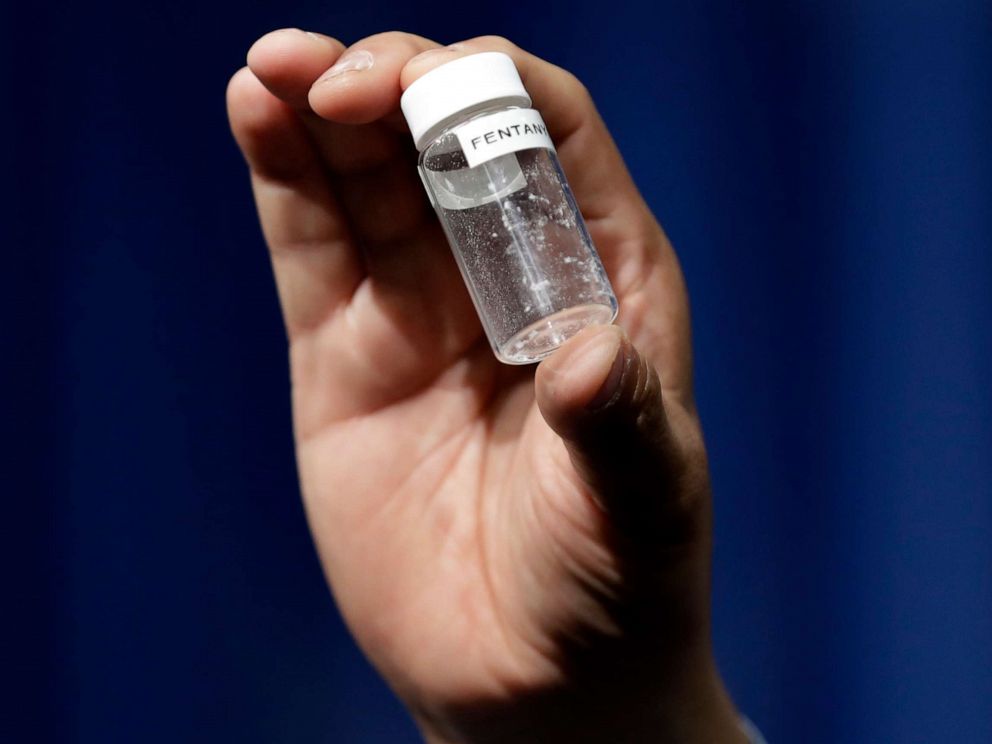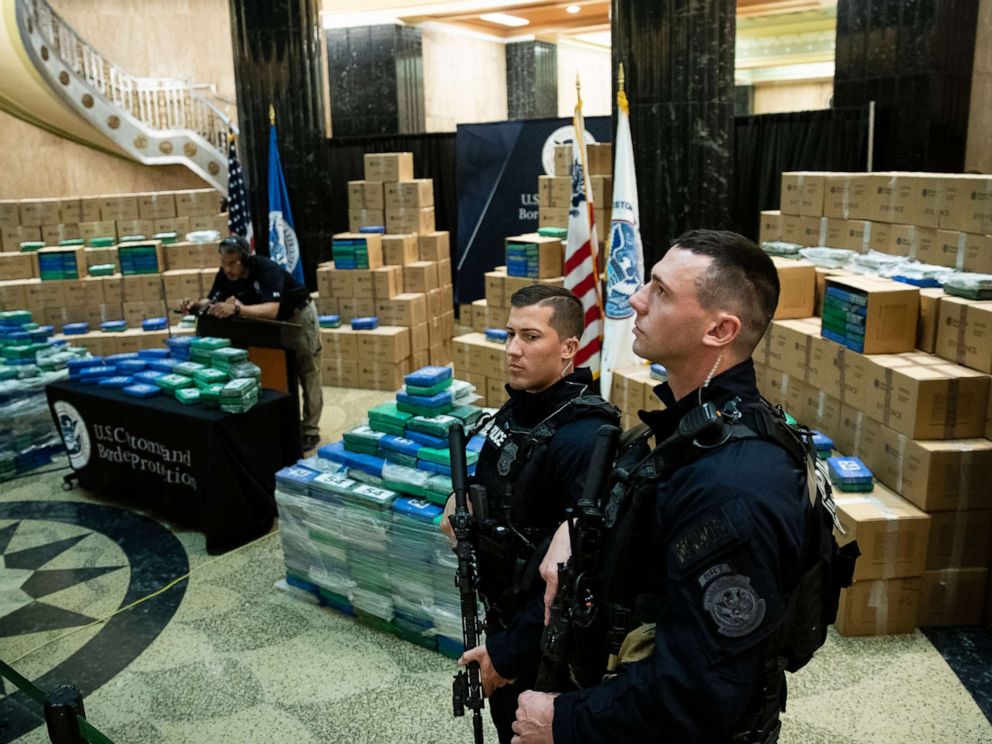The fear was the worst part for Ryan Fowler.
The New Hampshire native spent 10 years addicted to heroin, which has been increasingly mixed with the synthetic opioid fentanyl to boost its potency.
“I was full of a lot of fear, doubt and insecurity, and I didn’t know how to cope with it, so when I found drugs it was my solution,” Fowler told ABC News. “The anxiety I didn’t have language for went away. So drugs were my solution — until they really turned on me.”
Three times, Fowler said he nearly died from overdoses, only to be revived each time by emergency responders. Authorities said fentanyl has been driving opioid overdose rates for years, and now they’re facing a new challenge as fentanyl shows up more and more in another popular drug: cocaine.
“Cocaine, New York’s nemesis of the 90s, is back — indicating traffickers’ push to build an emerging customer base of users mixing cocaine with fentanyl,” DEA Special Agent in Charge Ray Donovan told ABC News in March, after officials seized $77 million worth of cocaine at the Port of New York and New Jersey.
Officials said they’re seeing more fentanyl in cocaine because drug traffickers are looking for ways to make cocaine more attractive, which they need to do because a surplus of coca plants in Columbia has resulted in an overabundance in the marketplace.
The cocaine seizure in New York in March, the biggest there in 25 years, was dwarfed last week by the seizure of more than $1 billion worth of cocaine on a cargo ship passing through Philadelphia on its way from Chile to Europe. The historic bust, one of the largest in U.S. history, comes amid a series of large drug seizures in the Northeast.
Some 38,000 pounds of cocaine had been seized from Oct. 1 to May 31, 2019, compared with nearly 52,000 the previous fiscal year, according to Customs and Border Protection.
And in April, for instance, the DEA confiscated more than 100 pounds of suspected cocaine and fentanyl in a truckload of Tupperware in New Jersey.
The increasing presence of fentanyl in cocaine is the latest twist in a public health crisis that’s pushed U.S. overdose rates to record levels. Whether consumed alone or in combination with other drugs, fentanyl has topped the list of the nation’s deadliest drugs for the third year in a row, causing the rate of drug overdose deaths to more than quadruple since 1999.
According to the National Institute on Drug Abuse, synthetic opioids like fentanyl in combination with cocaine have caused overdose deaths to surge since 2014.(MORE: Fentanyl deaths in the US spiked 1,000 percent over 6 years: Report)
Today, Fowler, who’s been drug-free for four years, helps others combat addiction as a community engagement specialist for the Doorway program at Granite Pathways, a social services organization many see as ground zero in the opioid epidemic. But the 29-year-old knows that the popularity of fentanyl means he’s facing an uphill battle.
“It’s a really acute opioid,” he said of the synthetic drug, which scientists say is up to 100 times more powerful than morphine. “You can spend a couple hundred dollars on the internet and order a gram of pure fentanyl and turn that into tens of thousands of dollars really quickly — and in the process, kill people unknowingly.”
That’s because a tiny amount of fentanyl can boost a drug’s potency to deadly levels, according to authorities.
In a 2018 bulletin, the DEA noted a 112% increase in the presence of cocaine and fentanyl together in drug samples and a decrease in fentanyl/heroin combination. And of those cocaine samples, 59% also contained heroin.

“This determination supports the theory that increased cocaine supply without corresponding consumer demand may result in cocaine being used as an adulterant to the existing heroin supply, with or without the knowledge of the seller or buyer,” the report said.
A DEA report from Florida in the same year said that “deadly” contaminated cocaine was “widespread” in the state.
“The widespread seizures of contaminated cocaine indicate that drug dealers are commonly mixing fentanyl and fentanyl-related substances into the drug (cocaine),” the report said. “In some cases, this is done purposefully to increase the drug’s potency or profitability (and customer base). In other cases, fentanyl is inadvertently mixed into cocaine by drug dealers using the same blending equipment to cut various types of drugs, such as heroin.”
The biggest risk comes to those who use cocaine occasionally, the DEA report said.
“Sometimes, if people who occasionally use cocaine are not opioid users, they’re really at increased risk for an overdose because they’re what we call ‘opioid naive’ — they have no tolerance,” Dr. Denise Paone, of the New York City Department of Health, told ABC News.
In 2017, fentanyl was New York’s deadliest drug, identified in 57% of the city’s overdose deaths, Health Department figures show.

As a result, this month the department is running the latest in a series of public health campaigns to warn drug users of the dangers of mixing fentanyl with other drugs. The $730,000 campaign is using outdoor media and online ads to encourage users to avoid mixing drugs and avoid using drugs without others present. It also encourages users to carry the opioid-blocking drug naloxone, which could reverse a potentially fatal overdose.
“We’re providing messaging about the presence of fentanyl cut into various substances, including cocaine,” Paone said of the campaign, which follows similar efforts in 2017 and 2018. The city also distributed more than 100,000 naloxone kits last year.
The greatest danger, Paone said, often comes when fentanyl is present without the user’s knowledge.
“Fentanyl is so potent, and it’s really hard for someone to tell if it’s in the substance they intend to use,” Paone added. “This really is a crisis.”

That’s why last year Fowler spearheaded a campaign through Safe Harbor Recovery Center to provide free fentanyl testing strips to users around Seacoast, New Hampshire. When a user mixes a tiny amount of their drug with water, then dips a test strip into the mixture, the strip will indicate whether fentanyl is present.
“The cool part about providing people with the ability to test their drugs for what’s in them is that it regulates the drug market really, really quickly,” Fowler said. “If you can go back to the person who’s selling to you and say, ‘Hey, this has fentanyl in it, and I don’t want that stuff,’ it kind of sorts itself out like any economy would. It’s like you and I would go to a store and look at a label and say, ‘I don’t want high fructose corn syrup, so I’m not going to buy this product, I’m going to buy this other product.'”(MORE: How authorities say drugmaker carried out scheme to push fentanyl-based drug)
For Fowler, education is part of a wider approach to combating drug addiction that includes treatment and counseling. With more than 50,000 overdose deaths in the U.S. each of the last three years, the fight, Fowler said, has never been more important.
“I’m sitting here watching friends die preventable deaths,” he added. “It’s really frustrating.”

























